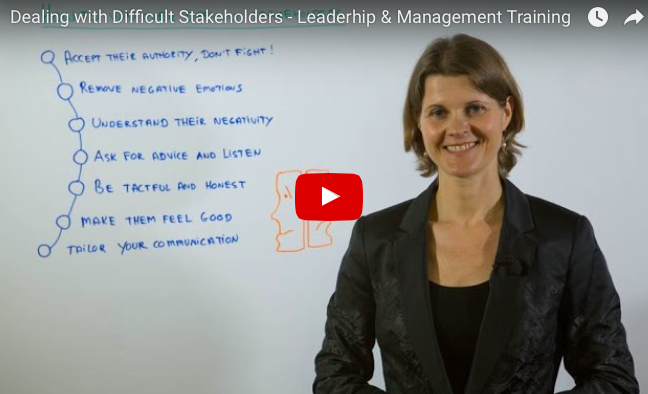| These stakeholders can be unpleasant to deal with because they make us feel insecure and in doubt about the direction of the project and the things we are doing. Most project managers only interface with them when they have to, but will otherwise avoid them. Why ask for unnecessary trouble? But of course we should be doing the exact opposite! We should be walking into the lion’s cage, so to speak, and address the stakeholders instead of avoiding the situation. |
When you look at your opponents, consider how they are acting towards you. Are they indifferent, absent and maybe non-committal? Could it be that your project is simply at the bottom of their priority list? If so, what can you do to increase their interest in the project and make them see the benefits and what’s in it for them? How can you take into consideration their other time commitments and make it easier for them to participate?
If, on the other hand, this isn’t a time management or a prioritization issue, but a deeper-rooted problem, you have to take a closer look at the emotions and the reasons that drive your opponent's behavior. What are the underlying needs that they feel are not being met? Could it be that they feel their voice is not being heard and their contributions aren’t being appreciated and that the project isn’t giving them what they were hoping for? Or do they in some way feel threatened by the project and what it will bring about? What can you do to actively engage these people and uncover the reasons for their skepticism? Maybe it is time for you to "walk into the lion’s cage" to find out?
Ask for advice
As you walk into the lion’s cage, one of the best ways to address your opponents is to ask for advice and feedback. This is a very disarming move, which instantly builds trust and opens up the relationship because you show that you care and that you are humble enough to ask for their opinion. Just imagine how they might react if you asked: “I would like to ask for your feedback about the project. I value your opinion on how you believe we can work more effectively and deliver a better product or service to you. Would that be ok? Are there any aspects (requirements, risks or issues) you feel we have overlooked? Which other tips and suggestions do you have for how we can improve?”
Sincerely listen to their answer
These questions have the potential to work wonders for you – but only if you sincerely mean it and take the time to really listen to the answer and to the meaning behind the words. Leave your negative emotions by the door, put your tongue on neutral and just listen. If you walk into a meeting that aims to build trust, with mistrust, you will undermine the process. We are often not aware of the emotions we bring to a situation ourselves – and neither is the other person – but subconsciously it always comes across. If you fundamentally don’t trust or respect the person you are interfacing with, they will detect it.
Your emotions affect your relationships
Take a moment to reflect on what your true feelings are towards some of the people with whom you have a tense relationship. Do you look up to them, down on them, do you fear them or do you think they are laughable? Do you unintentionally exclude them from emails and meetings, or do you tend to speak badly about them to other people? Have a long and hard look at the emotions and attitudes you hold, as they affect your interactions with people even if you would like them not to.
It is easy to fall into the trap of blaming someone else for a poor interpersonal relationship and for being skeptical towards us. But the truth is that we, as project managers, share the responsibility for creating a harmonious and dynamic stakeholder group – and that it is entirely within our sphere to do so. Building relationships is a two-way thing, and realizing that we can indeed change the situation – if we choose to – is a powerful first step.
If you liked this post, you may also like:
6 principles for building lasting relationships with your stakeholders
Become a better communicator with DISC profiling
The Most Common Communication Mistakes Project Managers
Overcoming Resistance to Change










 RSS Feed
RSS Feed